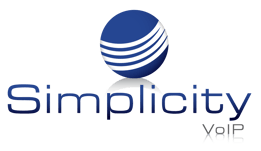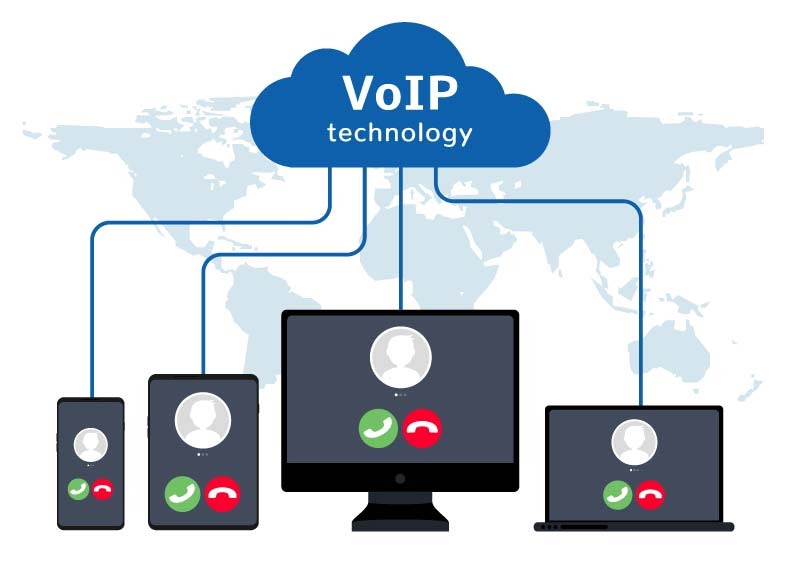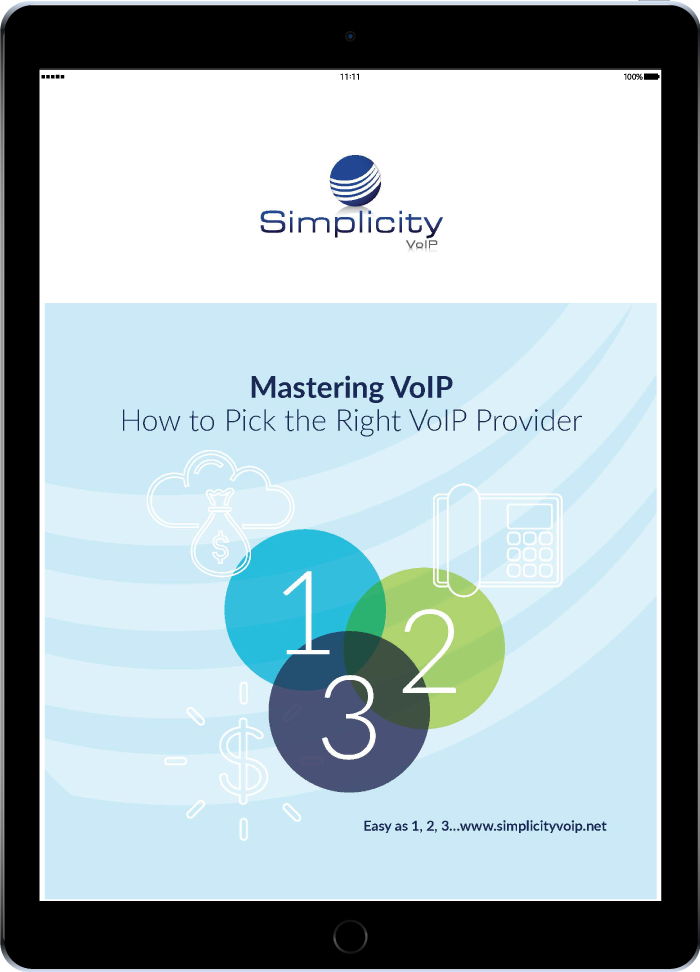10 Must-Have VoIP Features for Contact Centers
If you’re considering VoIP for your contact center, be sure you get these must-have features.
#1. Auto Attendants
Sometimes also called a virtual assistant, an auto attendant is a voice menu system that routes callers to the correct agent or extension without the intervention of a human receptionist.
Auto attendants can improve customer satisfaction because they optimize call handling. Customers are more likely to get routed to the right person from the beginning, with reduced risk of dropped calls. They also improve employee productivity because employees only receive calls that they’re qualified to handle, and they don’t spend time manually answering and transferring calls.
#2. Call Monitoring
Sometimes contact center agents need a little extra support, especially if they’re new to the job or are dealing with customer service challenge. Call monitoring allows supervisors to monitor calls and intercede if needed. Whisper technology allows managers to guide the contact center agent on what to say, without the customer’s knowledge, or to intercede in the conversation.
Call monitoring is instrumental in employee training. It can also contribute to overall better agent performance for multiple reasons:
- Agents are more likely to be attentive and follow best practices when they know they’re being monitored.
- Reviewing customer interactions can help improve scripts and processes, resulting in higher rates of customer satisfaction.
- The overall number of bad calls is often reduced, improving efficiency.
#3. Automatic Call Distribution
Automatic call distribution (ACD) is a system that automatically receives inbound calls and distributes them to contact center agents. Implemented well, an ACD can improve customer satisfaction and employee engagement.
The ACD collects information, such as location and language, based on caller ID. It also uses the customer’s response to the interactive voice response (IVR) to determine the caller’s needs. Using this information, the ACD will queue callers based on a customized set of factors that usually include customer status, query, and wait time. The call is then routed based on your preferred method. For instance, calls might be answered on a first-come, first-served basis, or based on agent specialization.
#4. Interactive Voice Response
An interactive voice response (IVR) works in tandem with the ACD. This technology allows customers to select an option that best describes their needs, either by pressing a button on their phones or by voice command. IVR systems can handle basic requests such as paying bills, finding out account information, routing to the correct department, or finding hours and locations.
These IVR menus allow customers to do some of the work independently and will leave more call center agents free to handle more complex queries or requests. The most effective IVR menus include no more than five options, and they always allow people to speak directly to an agent.
#5. CRM and Third-party App Integration
Your contact center is an incredible mine for customer-service data and insights--but only if you’re tracking the action. Integrating your VoIP system with your CRM and other apps (such as Microsoft Teams) allows you to maximize the value of this data across your organization.
Real-time call data can help your customer service agents to close more deals. A CRM integration makes this data available immediately, without agents having to manually enter notes about each conversation. Meanwhile, your sales and marketing team can use the insights gained from the contact center to better understand customer behavior, which can help to refine buyer personas and marketing strategies.
#6. Integrated Analytics and Reporting
A contact center represents a considerable investment in customer service. How do you know if you’re getting any ROI? With a traditional phone system, it’s often difficult to track individual agents’ or departmental performance. VoIP systems offer integrated analytics and reporting tools, accessible in real time through your VoIP service platform.
Your VoIP system will provide a comprehensive, real-time view of performance for the entire contact center. Basic analytics like call wait times and time to resolve a call can be used to evaluate progress toward KPIs like customer satisfaction (CSAT), customer retention, and a customer effort score.
#7. Mobile Apps
Consumer expectations and preferences are changing. And consumers are also employees. Employees are increasingly using their mobile devices for business functions. Mobile apps make it even easier to take VoIP services and tools anywhere. Call center agents might use mobile apps to handle customer interactions, while managers could use them to track employees’ performance and share insights on the go.
More sophisticated VoIP apps include key features such as video conferencing, group chat, and SMS/MMS. These are particularly beneficial for remote employees or those who frequently travel.
#8. Call Parking
A VoIP system allows call parking, where you put a caller on hold in the cloud. A parked call can then be answered by anyone in the organization by dialing the park extension number. Call parking is especially useful in contact centers because calls can easily be answered by the selected agent or supervisor.
#9. Call Recording
VoIP phone systems include software for recording calls, an indispensable feature for every contact center. Call recordings are useful for training both contact center agents and the sales team. Furthermore, recordings offer valuable information for quality control or legal purposes. Other advantages of call recording include the following:
- Compliance: In certain industries, most notably in financial services, all verbal communications must be recorded for the purposes of monitoring by the government.
- Liability reduction: Miscommunications potentially lead to costly lawsuits, and call recordings can help reduce the chances for legal action.
- Improved security: Companies that record their communications see fewer inappropriate calls and interactions than those that don’t.
- More employee engagement: Employees are less likely to make personal calls when their communication is recorded.
#10. Call Transcription
The latest must-have VoIP feature is call transcription. While a recording is often helpful for training and quality control, it’s not easily analyzed or searched. Call transcription allows your company to treat every call as part of a huge data set that can be analyzed to glean all kinds of insights.
And thanks to artificial intelligence (AI), call transcriptions have even more power. Sentiment analysis is the process of mining customer data (in this case call transcripts) to determine emotions and attitudes. On an individual basis, this means that callers who appear angry can be routed to agents who are adept at handling difficult situations. On a larger scale, the results of sentiment analysis can be used to provide a holistic view of customers’ feelings, which is valuable for sales, marketing, and even product development.



 Contact centers have become an integral part of so many businesses because they offer multiple advantages:
Contact centers have become an integral part of so many businesses because they offer multiple advantages: 


